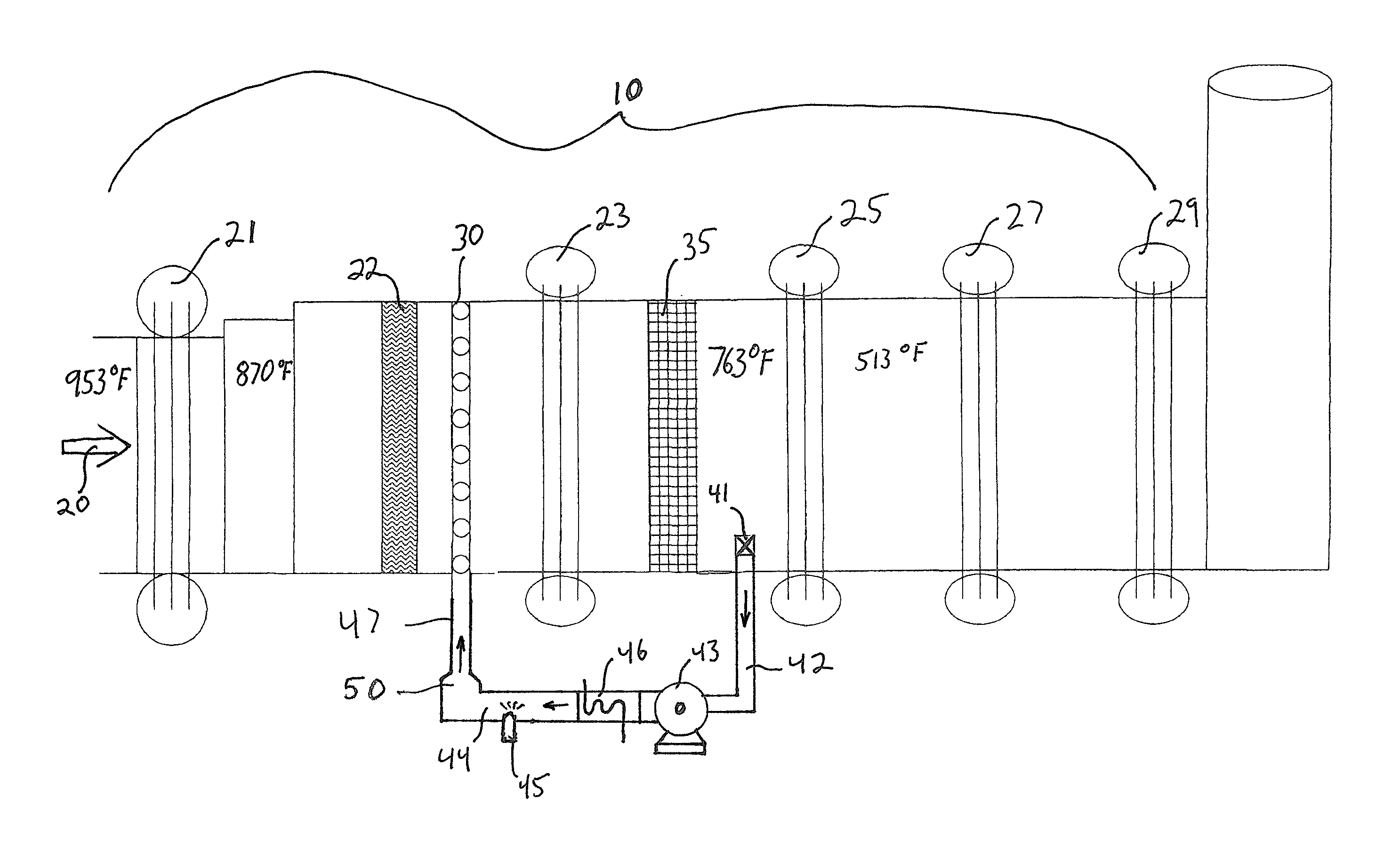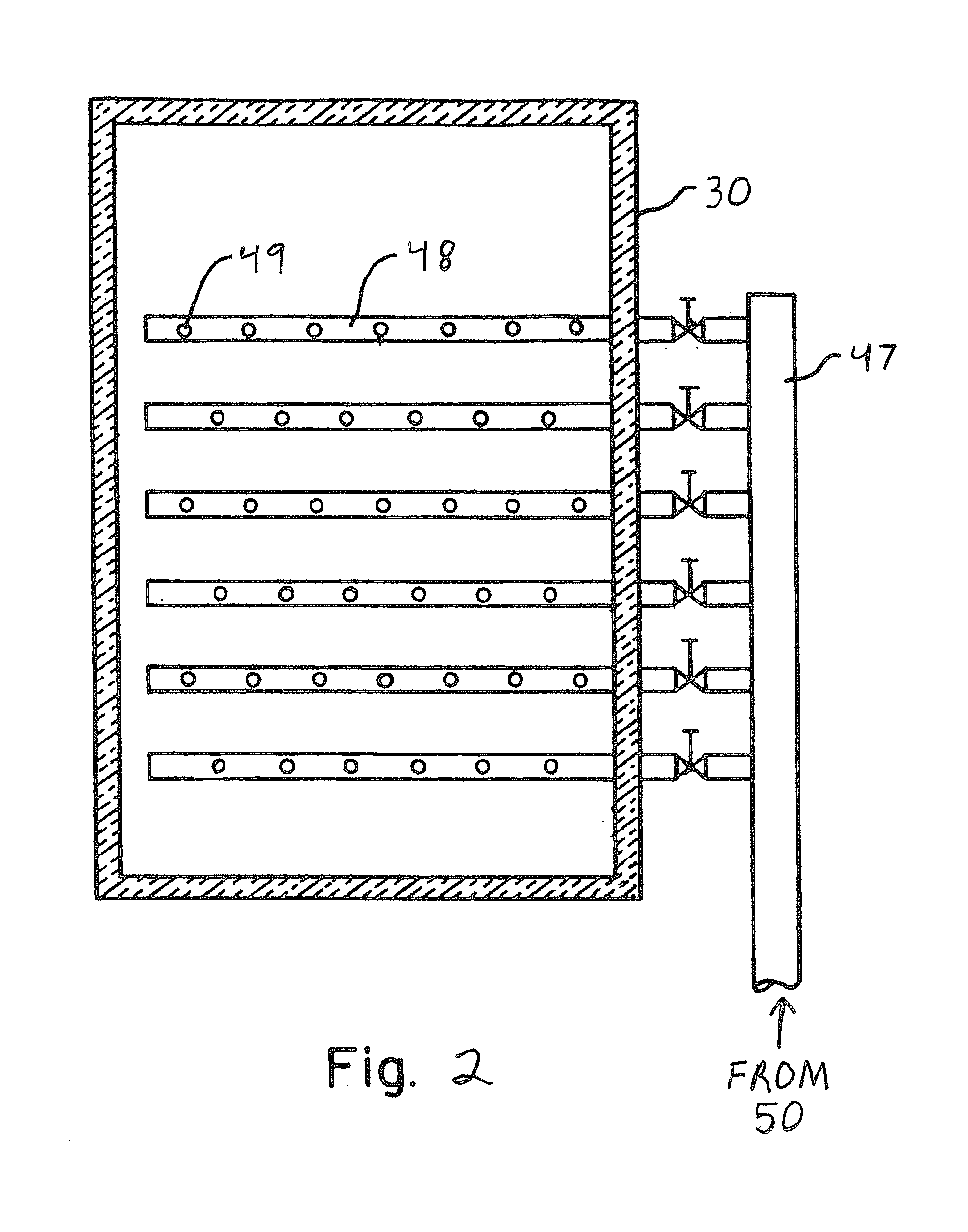System and method for urea decomposition to ammonia in a side stream for selective catalytic reduction
a technology of selective catalytic reduction and side stream, which is applied in the direction of emission prevention, machines/engines, gas turbines, etc., can solve the problems of not meeting the needs of small combustion sources, yamaguchi does not address the time required for complete decomposition and gasification of an aqueous solution of urea, and the emission of nitrogen oxide (“nox”) emissions from small industrial, commercial and electric utility boilers, etc., to achieve the effect of reducing nox emissions
- Summary
- Abstract
- Description
- Claims
- Application Information
AI Technical Summary
Benefits of technology
Problems solved by technology
Method used
Image
Examples
example
[0034]On a 25 MW gas fired gas turbine the uncontrolled NOx is 42 ppm and control to 2.5 ppm is required. That requires the injection and the decomposition of 7 gallons per hour of 32% urea solution. Hot gases exit the turbine at 953° F. and enter a first high-pressure heat exchanger section (21) of the HRSG. Following the first high pressure heat exchanger section (21) the gases are at a temperature of 870° F. and enter a second heat exchanger section (23). Disposed between the first heat exchanger section (21) and the second heat exchanger section (23) is an ammonia injection grid (AIG) (30) composed of multiple ammonia gas injection pipes with multiple injection orifices on each pipe.
[0035]FIG. 2 presents a typical AIG (30) well know to those skilled in the art. Following the second heat exchanger section (23) the gas temperature is 763° F. In a cavity following the second boiler heat exchanger (23) is disposed an SCR catalyst (35) selected for optimum NOx reduction in a window o...
PUM
 Login to View More
Login to View More Abstract
Description
Claims
Application Information
 Login to View More
Login to View More - R&D
- Intellectual Property
- Life Sciences
- Materials
- Tech Scout
- Unparalleled Data Quality
- Higher Quality Content
- 60% Fewer Hallucinations
Browse by: Latest US Patents, China's latest patents, Technical Efficacy Thesaurus, Application Domain, Technology Topic, Popular Technical Reports.
© 2025 PatSnap. All rights reserved.Legal|Privacy policy|Modern Slavery Act Transparency Statement|Sitemap|About US| Contact US: help@patsnap.com



